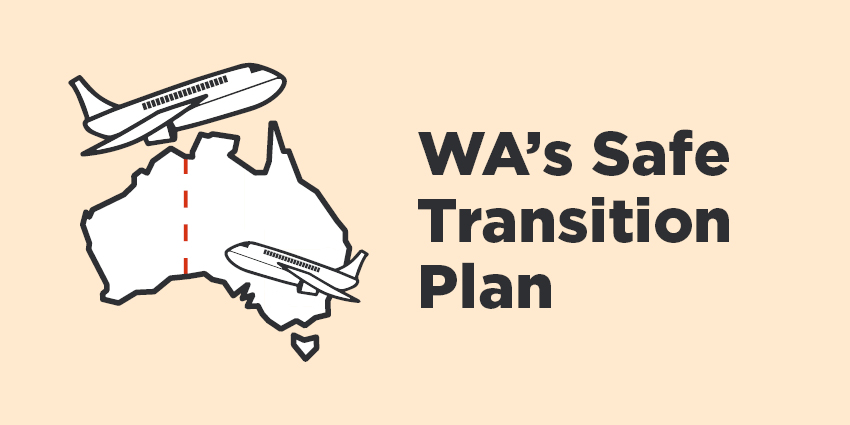
Visit the What you can and can’t do page for the latest advice and information on current measures in Western Australia. In light of the Omicron variant, work continues to finalise all settings as part of WA’s Safe Transition Plan.
WA’s Safe Transition Plan has been released.
The Plan outlines safe conditions for interstate and international travel, and provides certainty on how businesses and WA’s way of life can continue safely with the introduction public health and social measures once COVID-19 enters WA’s community.
With a 90 per cent double dose rate (12 years and older), expected in late January/early February, WA’s controlled border will be eased to allow for international and interstate travel from all jurisdictions, with testing and vaccination requirements.
Interstate arrivals will be required to:
- be double dose vaccinated (for eligible people)
- return a negative PCR test 72 hours before departure
- undertake a test on arrival in WA (to be phased out, pending a review)
International arrivals will be required to:
- be double dose vaccinated (for eligible people)
- return a negative PCR test 72 hours before departure
- undertake a test on arrival (to be phased out, pending a review)
- complete 14 days quarantine in a designated facility (if high risk, e.g. unvaccinated people)
Interim baseline public health and social measures will be applied to help manage the spread of COVID-19 in WA, pending up to date health advice, including:
- face masks for some high risk indoor settings (e.g. public transport, hospitals and aged care facilities)
- proof of vaccination for large events (1,000+), nightclubs and the casino
- contact registration (SafeWA) at all public venues
- revised COVID Event and Safety Plans
- restricted entry to remote Aboriginal communities, where necessary.
These baseline measures may increase based on up to date health advice at the time.
WA’s Safe Transition Plan’s 90 per cent vaccination rate threshold is based on the latest health advice underpinned by WA Health modelling.
Modelling is utilised to illustrate potential scenarios for WA, given there are limited real-life examples to draw from, because of WA’s unique COVID-free position. The modelling illustrates a slower rise in cases at 90 per cent vaccination compared to an 80 per cent rate and based on a realistic level of tracing, testing, isolation and quarantine measures.
This means at a 90 per cent rate, with widespread community transmission, the maximum number of general bed hospitalisations on a single day is reduced to 54, compared to 178 general bed hospitalisations, on a comparable day, at an 80 per cent rate.
More information:
To book a COVID-19 vaccine, visit Roll up for WA (external link).


